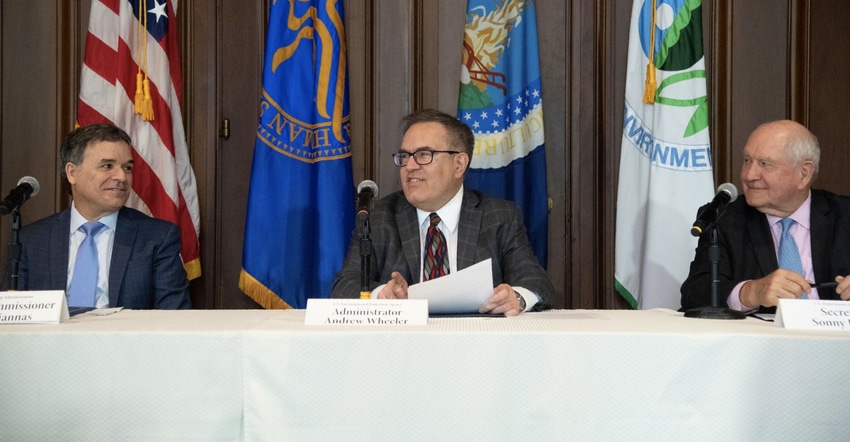Food waste strategy looks to educate consumers
USDA, FDA and EPA offer interagency strategy to address food waste.

In an effort to create a “cultural change” to reduce food waste, the U.S. Department of Agriculture, the Environmental Protection Agency and the Food & Drug Administration announced the release of a federal interagency strategy to address food waste.
In the U.S., more than one-third of all available food goes uneaten through loss or waste. Food is the single largest type of waste in daily trash. In recent years, great strides have been made to highlight and mitigate food loss and waste, but the work has just begun, the agencies noted.
The agencies held an event at EPA headquarters on April 9 to hear from state, local and community leaders and other stakeholders on how all levels of government can work together to reduce food waste.
Agriculture Secretary Sonny Perdue reiterated that his motto at USDA to “do right, feed everyone” also coincides with reducing food waste. The cultural change needed to reduce food waste from farm to table will require additional cooperation, especially with consumers.
FDA deputy commissioner Frank Yiannas said, “The issue of food safety and food waste are intertwined, with research showing that there is confusion over the meaning behind date labeling terminology on food packages that have an adverse effect on food waste. Contrary to popular belief, date labeling on food packages is often intended to communicate time ranges for optimal food quality, not safety.”
Yiannas noted that with more than one-third of all available food uneaten through waste or loss and one in six Americans suffering from a foodborne illness each year, it’s clear that many people are unnecessarily discarding food over fears of food safety issues. “This is why the FDA is focused on taking steps to make date labeling on foods clearer and easier for consumers to determine when a food should be discarded," he said. "We remain committed to working with the EPA and USDA to better educate Americans on how to reduce food waste and how to do it safely.”
Perdue said much of the food waste in the U.S. occurs at home. He said the Food Keeper app offers consumers information about when food should be thrown out and noted that 225,000 uses of the new app have already helped consumers with food information.
Also at the event, EPA Administrator Andrew Wheeler explained that the new strategy prioritizes six key action areas -- such as improving consumer education and food labeling -- that will help maximize the value of food resources.
The newly announced "Winning on Reducing Food Waste FY 2019-2020 Federal Interagency Strategy" includes six key priority areas on which the agencies will work together over the next year: (1) enhance interagency coordination, (2) increase consumer education and outreach efforts, (3) improve coordination and guidance on food loss and waste measurement, (4) clarify and communicate information on food safety, food date labels and food donations, (5) collaborate with private industry to reduce food loss and waste across the supply chain and (6) encourage food waste reduction by federal agencies in their respective facilities.
At the event, the agencies additionally signed a joint agreement with ReFED Inc. to better evaluate and improve upon strategies to reduce food loss and waste.
The latest strategy builds on a formal agreement all three federal agencies signed in 2018 announcing the Winning on Reducing Food Waste Initiative, their collaborative effort to reduce food loss and waste through combined and agency-specific action.
Individually and collectively, USDA, EPA and FDA contribute to the initiative, encourage long-term reductions and work toward the goal of reducing food loss and waste in the U.S. These actions include research, community investments, education and outreach, voluntary programs, public/private partnerships, tool development, technical assistance, event participation and policy discussion.
About the Author(s)
You May Also Like





